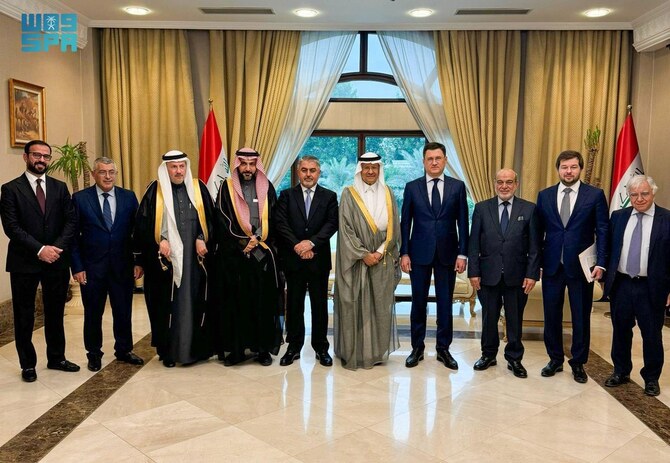In a significant development for the global oil market, major oil-producing nations, including Saudi Arabia, Russia, Iraq, the United Arab Emirates (UAE), Kuwait, Kazakhstan, Algeria, and Oman, have reaffirmed their commitment to ensuring market stability. This decision, made during a recent virtual meeting, underscores the collective resolve of these countries to adjust production levels flexibly, maintaining a balanced and healthier oil market outlook.
These eight countries are part of the OPEC+ alliance, which has played a crucial role in stabilizing global oil markets in recent years. The alliance had previously implemented voluntary production cuts in April and November 2023, totaling 2.2 million barrels per day (mbd). These measures were taken to counteract declining oil prices and to prevent an oversupply that could destabilize the market. On March 3, 2025, they convened virtually to assess the current market conditions and discuss the way forward. Recognizing the improved market fundamentals and a more optimistic outlook, they agreed to proceed with a gradual and flexible return of the 2.2 mbd voluntary adjustments starting April 1, 2025. This approach allows them to adapt to evolving market conditions, with the possibility to pause or reverse the increase if necessary.

The oil market reacted swiftly to the announcement, with Brent crude prices experiencing a 2% decline, dropping to under $72 per barrel—the lowest level in nearly three months. This reaction reflects market participants’ anticipation of increased supply and its potential impact on prices. The decision also alleviated some concerns about potential supply shortages, which had been a key factor supporting higher prices earlier this year.
Country-Specific Actions and Challenges
Kazakhstan, one of the key members of OPEC+, reported a significant increase in its oil production, reaching a record high of 2.12 million barrels per day in February 2025. This surge was primarily driven by increased output from the Tengiz oilfield, following extensive maintenance and expansion efforts. Notably, Kazakhstan’s production exceeded its OPEC+ quota of 1.468 million bpd, highlighting the ongoing challenges of aligning national production goals with collective agreements. Despite the higher production levels, Kazakhstan reaffirmed its commitment to the OPEC+ agreement, emphasizing the importance of market stability.
In Saudi Arabia, the world’s largest oil exporter, the state-owned oil giant Saudi Aramco reported a 12% decline in profits for 2024, with net income falling to $106.25 billion from $121 billion in 2023. This decrease was attributed to declining energy prices, which led the company to reduce its dividend to over $85 billion, down from $124 billion the previous year. The drop in oil prices saw benchmark Brent crude trading at $71 a barrel, significantly lower than the peak of over $100 a barrel in 2022. Despite these challenges, Aramco’s CEO, Amin Nasser, expressed optimism about the continued growth in global oil demand in 2025. He emphasized that the company’s long-term strategy remains focused on expanding production capacity and investing in downstream projects to enhance value creation.
In addition to Kazakhstan and Saudi Arabia, other OPEC+ members, including Russia, Iraq, and the UAE, also reiterated their commitment to supporting a balanced and stable oil market. Russia, which has been facing international sanctions due to geopolitical tensions, emphasized the importance of maintaining a cooperative approach within OPEC+ to manage global supply effectively. Iraq and the UAE, key producers in the group, expressed similar views, highlighting the need for continued coordination to address uncertainties in the global economy and energy markets.
Shifts in OPEC+ Strategy
The decision to gradually increase production marks a notable shift in OPEC+ strategy, ending a series of delays in unwinding output cuts. Since 2022, OPEC+ had been cutting output by 5.85 million barrels per day to stabilize the market in the wake of the COVID-19 pandemic and subsequent demand shocks. In December, the group extended these cuts through the first quarter of 2025, postponing the output-raising plan to April. The current plan involves adding 2.2 million barrels per day over the next 18 months, with the flexibility to adjust based on evolving market conditions.
This strategy reflects a cautious optimism about the global economic recovery, with OPEC+ members balancing the need to support prices with the risk of undermining demand through excessive supply. By adopting a gradual approach, OPEC+ aims to avoid a repeat of the 2020 oil price crash when an unexpected surge in supply coincided with a collapse in demand due to global lockdowns. The flexibility embedded in the current plan also allows the group to respond quickly to unforeseen disruptions, such as geopolitical tensions or natural disasters affecting key supply routes.
Economic and Geopolitical Considerations
The decision to adjust production levels comes amid broader economic and geopolitical considerations. In particular, the potential imposition of U.S. tariffs on Canadian and Mexican goods has raised concerns about global trade tensions and their impact on oil demand. These tariffs, if implemented, could further pressure oil prices by dampening economic activity in North America, a key market for OPEC+ exports.
Additionally, new U.S. sanctions on major oil producers like Venezuela, Iran, and Russia have introduced uncertainties in global supply chains, influencing OPEC+’s deliberations on whether to raise or freeze oil output in April. These sanctions, aimed at curbing the revenue streams of targeted nations, have complicated the supply outlook, making it challenging for OPEC+ to predict demand accurately.
The ongoing conflict in Eastern Europe has also exacerbated uncertainties in the oil market. The disruption of pipelines and export terminals, coupled with the threat of expanded sanctions on Russian energy exports, has added to the volatility. In response, OPEC+ members have underscored the importance of a united front to navigate these complexities effectively.
Future Outlook
Looking ahead, the reaffirmed commitment by these key oil-producing nations to market stability reflects a proactive approach to managing the global oil supply and demand balance. By implementing a gradual and flexible production increase, OPEC+ aims to support a stable and balanced oil market, benefiting both producers and consumers worldwide. The group’s emphasis on flexibility allows them to respond effectively to evolving market conditions, ensuring that their strategies align with global economic developments.
As the global economy continues to recover and energy demand evolves, the actions of these OPEC+ countries will play a crucial role in shaping the future trajectory of the oil market. Their collective efforts to maintain stability and balance underscore the importance of cooperation and adaptability in navigating the complexities of the global energy landscape. The next OPEC+ meeting, scheduled for June 2025, is expected to provide further insights into the group’s production strategy and its assessment of market conditions.
In conclusion, the decision by OPEC+ members to proceed cautiously with a production increase reflects a balanced approach to managing supply and demand dynamics in a complex global environment. By reaffirming their commitment to market stability, these nations have sent a clear signal of their intent to support sustainable growth and prevent excessive volatility in oil prices. As uncertainties persist, the global oil market will closely watch how OPEC+ manages its production policy in the coming months
Saudi Pro League’s Youth Revolution: 28 Rising Stars Join the Ranks



